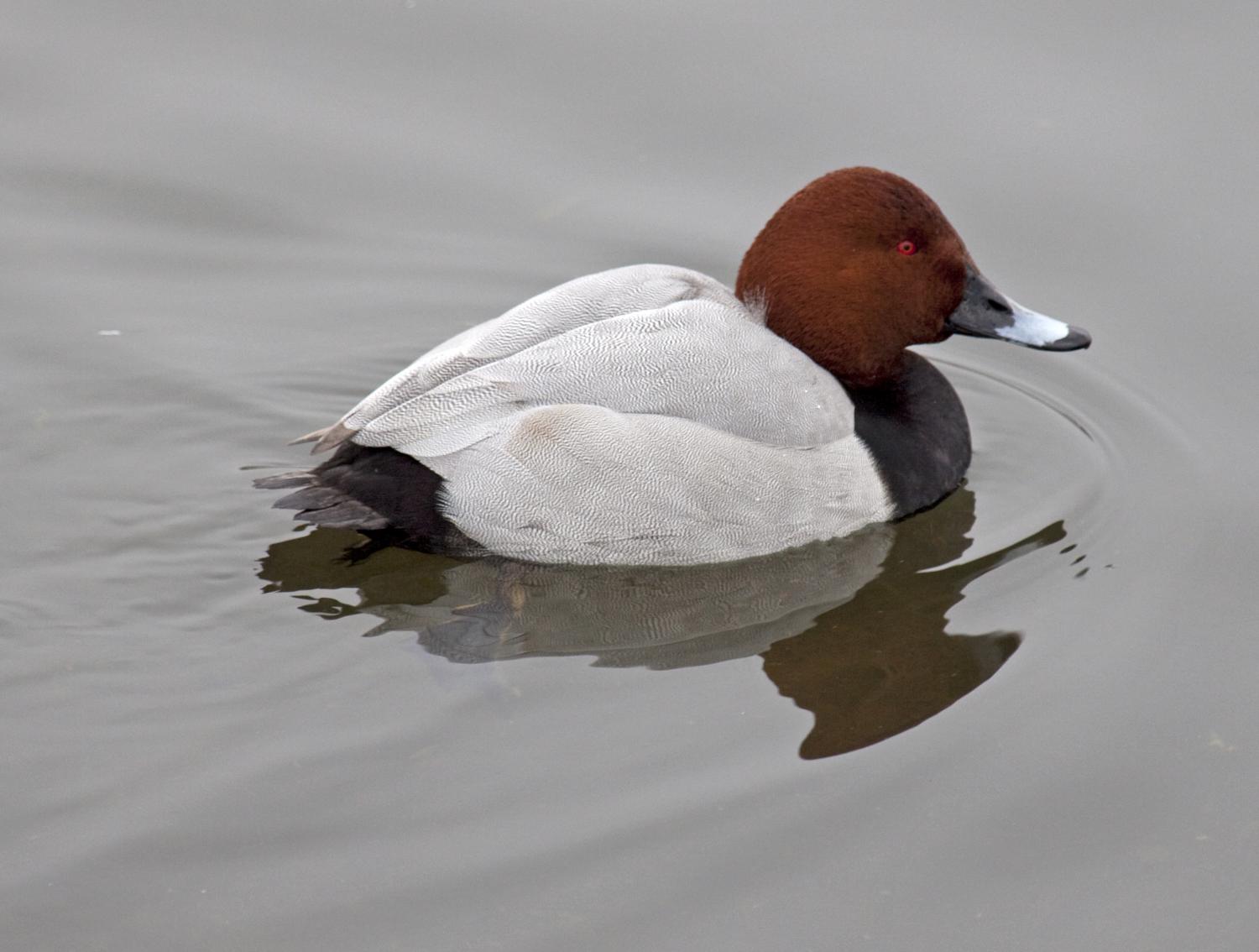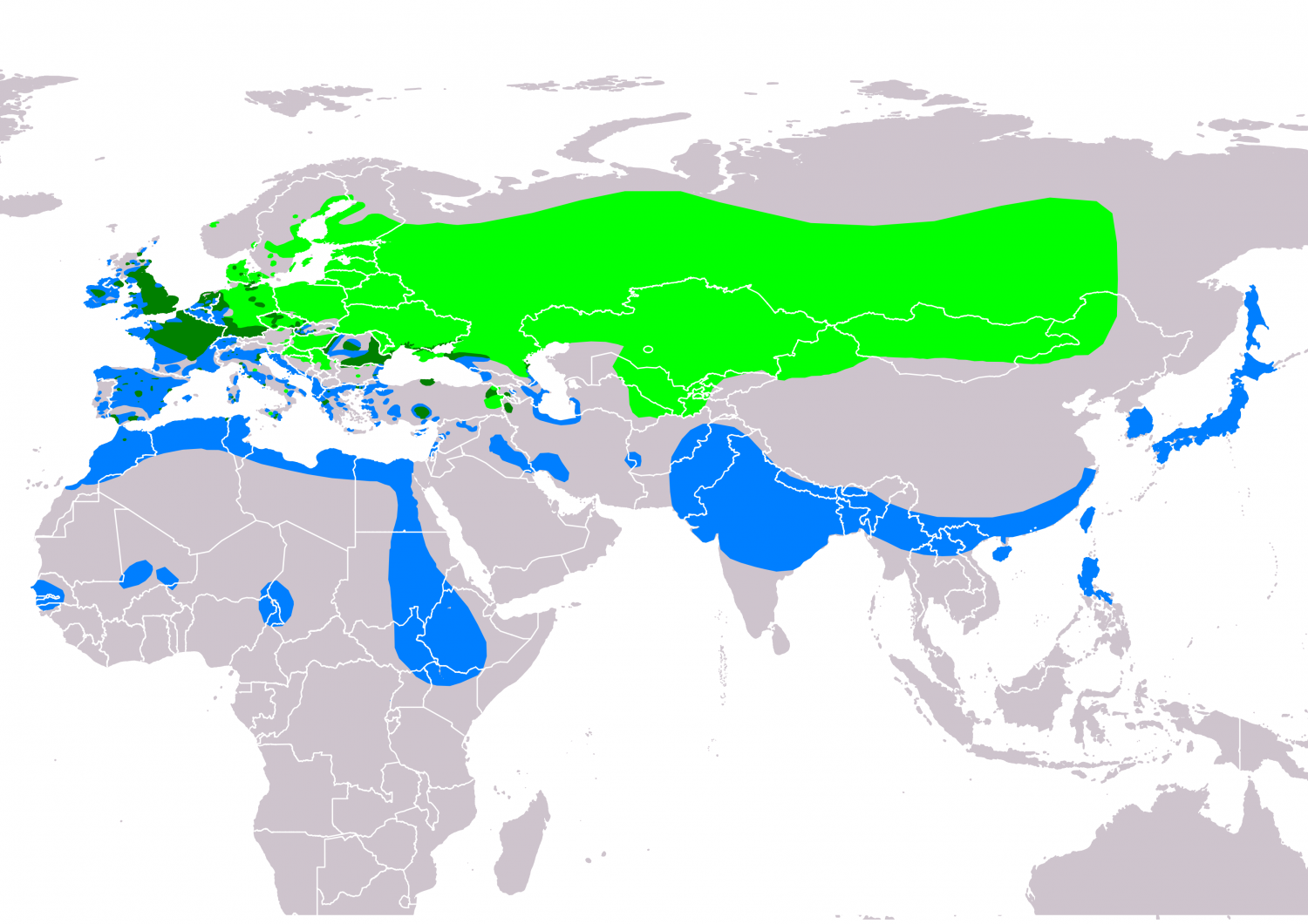Species of Thailand
Common pochard
Aythya ferina
Carolus Linnaeus, 1758
In Thai: เป็ดโปช้าดหลังขาว
The common pochard (; Aythya ferina) is a medium-sized diving duck. The scientific name is derived from Greek aithuia an unidentified seabird mentioned by authors including Hesychius and Aristotle, and Latin ferina, "wild game", from ferus, "wild".
Description
The adult male has a long dark bill with a grey band, a red head and neck, a black breast, red eyes and a grey back. The adult female has a brown head and body and a narrower grey bill-band. The triangular head shape is distinctive. Pochards are superficially similar to the closely related North American redhead and canvasback.
Females give hoarse growls. Males have whistles cut off by a final nasal note aaoo-oo-haa.
Distribution and habitat
Their breeding habitat consists of marshes and lakes with a metre or more water depth. Pochards breed in much of temperate and northern Europe and across the Palearctic. They are migratory, and spend winter in the south and west of Europe.
In the British Isles, birds breed in eastern England and lowland Scotland, in small numbers in Northern Ireland with numbers increasing gradually, and sporadically in the Republic of Ireland, where it may also be increasing. While uncommon, individuals are also occasionally seen in the south of England, and small populations are sometimes observed on the River Thames. Large numbers stay overwinter in Great Britain, after the birds retreat from Russia and Scandinavia.
Ecology
These are gregarious birds, forming large flocks in winter, often mixed with other diving ducks such as the tufted duck, with which they are known to hybridise.
These birds feed mainly by diving or dabbling. They eat aquatic plants with some molluscs, aquatic insects and small fish. They often feed at night, and will up-end for food as well as the more characteristic diving. According to the article 'Patterns in the diving behaviour of the pochard, Aythya ferina: a test of an optimality model' Pochard's have a behavioral preference when it comes to their feeding patterns. This behavioral preference is that Pochards prefer shallower water in comparison to deeper water even though the food concentration in deeper water may be higher.
In number of countries the population of Common Pochard is decreasing mainly due to urbanization of the natural habitats and their transformation, as well as due to overhunting.
The pochard is one of the species to which the Agreement on the Conservation of African-Eurasian Migratory Waterbirds (AEWA) applies.
This article uses material from Wikipedia released under the Creative Commons Attribution-Share-Alike Licence 3.0. Eventual photos shown in this page may or may not be from Wikipedia, please see the license details for photos in photo by-lines.
Category / Seasonal Status
Wiki listed status (concerning Thai population): Very rare winter visitor
BCST Category: Recorded in an apparently wild state within the last 50 years
BCST Seasonal status: Non-breeding visitor
Scientific classification
- Kingdom
- Animalia
- Phylum
- Chordata
- Class
- Aves
- Order
- Anseriformes
- Family
- Anatidae
- Genus
- Aythya
- Species
- Aythya ferina
Common names
- Thai: เป็ดโปช้าดหลังขาว
Conservation status

Least Concern (IUCN3.1)

Vulnerable (BirdLife)

Vulnerable (ONEP)

Vulnerable (BCST)
Photos
Please help us review the bird photos if wrong ones are used. We can be reached via our contact us page.
Range Map

- Bueng Boraped Non-Hunting Area
- Chiang Saen District, Chiang Rai
- Mae Chan District, Chiang Rai
- Nong Bong Khai Non-Hunting Area



